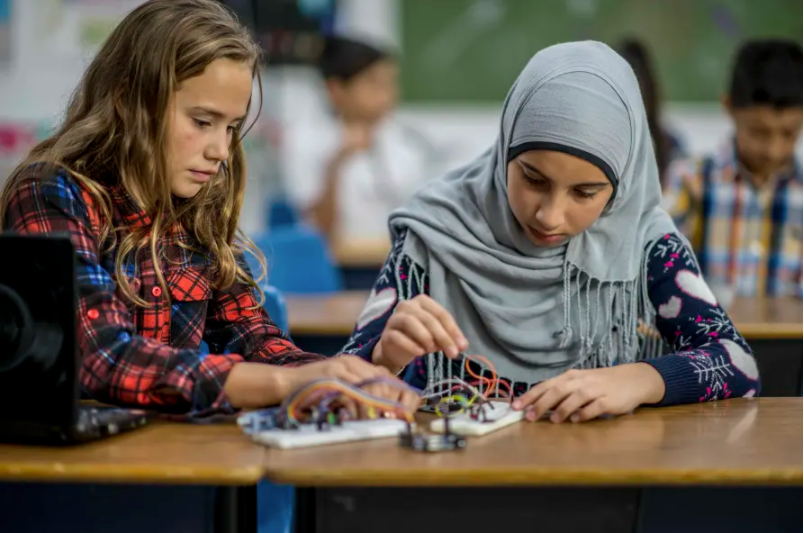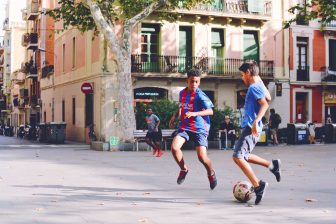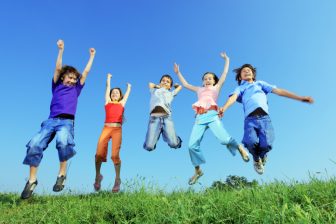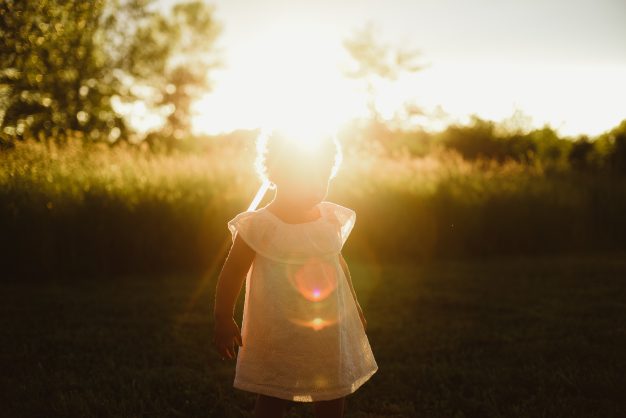
What we know about our children after 2021
In 2021, families across the nation and around the world endured a second year of interrupted schooling, with the associated challenges of home-learning, working from home and isolation from the support networks of extended family and friends.
For our youngest learners the proportion of their lives spent living in a pandemic is very large, and we don’t yet know the lasting impact COVID-normal will have.
Parents and teachers will need to remain alert, observant, adaptable and responsive to ensure our young people can thrive as best they can to a range of challenges – not just COVID-19 – in a world that’s found a new way of getting through this unexpected moment in history, says Pursuit, The University of Melbourne.
At the closing of 2021, we asked three educational experts from the Melbourne Graduate School of Education to review the year and what we’ll need to do next.
Dr Annie Gowing is a Senior Lecturer and Student Wellbeing Specialisation Leader in the Master of Education program. Hernan Cuervo is an Associate Professor and Deputy Director of the School’s Youth Research Centre. Yong Zhao is Professor in Educational Leadership and Jim Watterson is Enterprise Professor and Dean of the Melbourne Graduate School of Education.
Dr Annie Gowing
School closures caused by COVID-19 have affected the education and wellbeing of children and young people worldwide, however, those impacts haven’t been experienced in the same way by all, and a more nuanced analysis invites consideration of age, place, community resources, individual and family circumstances and personal histories.
The pandemic has magnified some inequalities and revealed others that may have been previously invisible.
Those most affected, including young people with additional learning needs and disabilities, are likely to carry the pandemic wellbeing burden for longer than their less impacted peers.
In viewing the pandemic as a natural disaster, there will be impacts on social-emotional development for all young people.
Those living in households and communities with elevated economic and social impacts, and those with pre-existing mental health concerns are likely to be more seriously affected. For all there has been an uplift in uncertainty and anxiety as the predictability, safety and stability of their world has shifted.
The ruptured connections with teachers and peers, particularly for those at key transition points like preschool settings into primary school and primary school into secondary school, have translated into a loss of relatedness that will take time to rebuild.
Particular attention needs to be directed to the youngest students who have had their foundational learning in literacy and numeracy disrupted, along with their social development, particularly in forming their student identities.
The duration of these effects will vary and the capacity of young people to be resilient in the face of these challenges will heavily depend on the capacity of their families, communities and schools to prioritise restoring wellbeing in the short and longer-term.
Schools will need to hold on to the flexibility and adaptability they discovered over the past two years as their students will require finely calibrated and differentiated interventions to rebuild their socio-emotional and cognitive wellbeing.
The well-being of teachers must also be rebuilt as they have endured the same challenges as the whole population but with the additional occupational stress of teaching and supporting their students for extended periods of time in the online environment.
Associate professor Hernan Cuervo
The COVID-19 pandemic brought new and old uncertainties, and social and economic risks, into sharp relief.
In the last two years, parents and caregivers in Australia and around the globe have tried to work remotely, had their work changed or increased, particularly those being an “essential worker”, or became unemployed, while trying to navigate the education and care of their children.
Parents and caregivers have certainly lived in the present since the pandemic began. But what about their concerns for their children’s future?
The Life Patterns project run through the Melbourne Graduate School of Education has followed two cohorts of Australians since they left school, in 1991 and 2006 respectively.
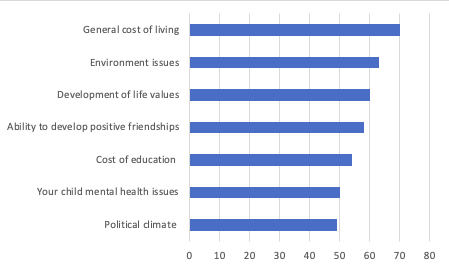
This year we surveyed the youngest cohort, who are currently aged 33, and of whom four out of ten are parenting in some form. In this survey, we asked them about the level of concern they have for their child/children’s future regarding several themes.
Cost of living and environmental issues were the two top concerns. Parents’ and caregivers worries for the future also included their children’s ability to develop friendships, the development of their life values, mental health issues, the political climate and the cost of education.
These concerns closely resembled the same worries these parents had in early 2020.
While some parents appreciated that their children were too young to understand how COVID-19 affected the world, others were focused on the cost of living and education or the missing socialisation of their children with their peers.
This father living in a regional town encapsulated contemporary concerns that have an impact beyond the present and into the future:
I’m worried about inaction on climate change, increased polarisation of society on political and cultural discourse, the perpetuation (and seeming celebration) of misinformation, the safety of the digital world, and a general concern around how people treat each other with respect (or lack thereof).
Ultimately, when it comes to their children, parents and caregivers live in the present but also think of the future. While COVID-19 has shaken things up for them, some of their woes and concerns predate and will go beyond this time of the pandemic.
Professor Yong Zhao and Professor Jim Watterston
COVID-19 occupied our thoughts this year but it’s far from the major issue for our children’s futures.
To thrive in a world that is drastically transformed by technology and globalisation, children need to become independent, critical, entrepreneurial, creative and collaborative. When jobs are replaced by machines or outsourced, our children will need to become job creators instead of job finders.
We need to rethink the purpose of education: it isn’t to prepare children to be ready for the future, because they are the creators of the future. Our job is to help them develop the skills and perspectives to develop a better future for all human beings.
Every child has a jagged profile of abilities, good in some domains and poor in others.
Education should be a strength-based and passion-driven process to help each child develop their strengths and find their passions. Education should also help each student learn to use their unique talents and passions to serve others and the world.
To create such education is to give children more freedom to exercise their right to self-determination and lead their own education.
We need to pay a lot more attention to the growth of children than the content of the curriculum. We should provide a broad and flexible curriculum, use product-oriented pedagogy, and engage students in real-life learning on a global scale.
Ultimately, learning should be personalised by students.
This article was first published on Pursuit. Read the original article.


